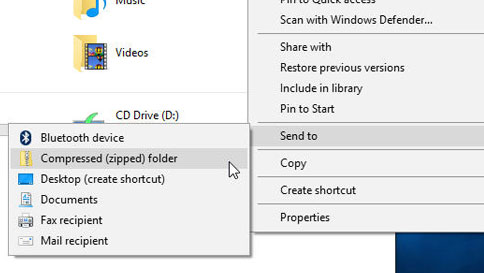
Linux (and Mac terminal) command lineĭepending on the Linux distribution you may have different GUI options (or none), but you will almost certainly have zip installed as a command line program.

If you want to test that everything is as expected, you can unzip a ZIP file, by right clicking on the file and selecting 'Extract All' from the context menu. If you are on a Windows desktop, right click on the folder, hover over/select 'Send to' on the context menu and then select 'Compressed (zipped) folder'. If you want to test that everything is as expected, you can unzip a zip file again, either by double clicking the file or bringing up the context menu and selecting 'Open with' and choosing the unzipping program (probably called "Archive Utility"). To compress the folder on an Apple Mac, select the the folder and bring up the context menu by either:Ĭhoose “Compress” from the shortcut menu. You’ll find your zip file in the same folder as your original folder.First get all the files that you need to submit together in a folder on your computer.įor most operating systems, the ability to create zip files should be already available to you without installing any extra software. By default, your compressed file will have the same name as your folder, but with a “.zip” at the end.

Here’s how to zip a file or folder on a Mac or a Windows PC. But then, how exactly are you going to upload the folders as attachments in an email? Well, the easiest way to do that is to turn them into a ZIP file. You visited so many places that you decide to organize them into folders. So you just went on a vacation with friends, and they’re asking for copies of your photos.


 0 kommentar(er)
0 kommentar(er)
